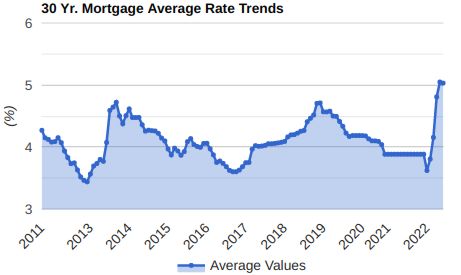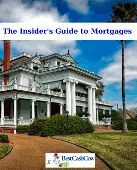Madison, New Jersey 30-Year Fixed Conforming Mortgage
Average: 6.67% APR
| Lender | APR | Rate (%) | Monthly Payment? |
||||
|---|---|---|---|---|---|---|---|

Veterans United Home Loans NMLS ID: 1907 |
|
Learn More
|
|||||

Colonial Mortgage Service Company of America NMLS ID: 112851 License#: N0002974 |
5.825% 30 Yr Fixed |
5.750%
Fees & Points
$2,611 Total
0.816 Pts: $2,611 $0 Fees |
Learn More
See Table View |
||||

District Lending NMLS ID: 1835285 |
5.850% 30 Yr Fixed |
5.750%
Fees & Points
$3,485 Total
0.933 Pts: $2,986 $499 Fees |
Learn More
See Table View |
||||

Pure Rate Mortgage NMLS ID: 2578474 |
5.851% 30 Yr Fixed |
5.750%
Fees & Points
$3,530 Total
0.775 Pts: $2,480 $1,050 Fees |
Learn More
See Table View |
||||

Reliant Home Funding, Inc. NMLS ID: 292473 |
5.867% 30 Yr Fixed |
5.750%
Fees & Points
$4,088 Total
0.654 Pts: $2,093 $1,995 Fees |
Learn More
See Table View |
||||

Allied Mortgage Group, Inc. NMLS ID: 1067 |
5.958% 30 Yr Fixed |
5.875%
Fees & Points
$2,867 Total
0.896 Pts: $2,867 $0 Fees |
Learn More
See Table View |
||||

LoanFlight Lending, LLC NMLS ID: 1522344 |
5.963% 30 Yr Fixed |
5.875%
Fees & Points
$3,059 Total
0.956 Pts: $3,059 $0 Fees |
Learn More
See Table View |
||||

Bison State Bank NMLS ID: 757416 |
5.966% 30 Yr Fixed |
5.875%
Fees & Points
$3,149 Total
0.984 Pts: $3,149 $0 Fees |
Learn More
See Table View |
||||

Northpointe Bank NMLS ID: 447490 |
5.982% 30 Yr Fixed |
5.875%
Fees & Points
$3,699 Total
0.720 Pts: $2,304 $1,395 Fees |
Learn More
See Table View |
||||

Tomo Mortgage, LLC NMLS ID: 2059741 |
5.984% 30 Yr Fixed |
5.875%
Fees & Points
$3,766 Total
0.552 Pts: $1,766 $2,000 Fees |
Learn More
See Table View |
||||

Bergen Mortgage Enterprise LLC NMLS ID: 1897215 |
6.058% 30 Yr Fixed |
6.000%
Fees & Points
$2,000 Total
0.625 Pts: $2,000 $0 Fees |
Learn More
See Table View |
||||

Farmers Bank of Kansas City NMLS ID: 613839 |
6.108% 30 Yr Fixed |
5.990%
Fees & Points
$4,063 Total
0.680 Pts: $2,176 $1,887 Fees |
Learn More
See Table View |
||||

HSBC Bank USA, N.A. NMLS ID: 399799 |
6.124% 30 Yr Fixed |
6.000%
Fees & Points
$4,412 Total
0.964 Pts: $3,085 $1,327 Fees |
Learn More
See Table View |
||||

PenFed Credit Union NMLS ID: 401822 |
6.139% 30 Yr Fixed |
6.000%
Fees & Points
$4,795 Total
0.875 Pts: $2,800 $1,995 Fees |
Learn More
See Table View |
||||

Mutual of Omaha Mortgage, Inc. NMLS ID: 1025894 |
6.228% 30 Yr Fixed |
6.125%
Fees & Points
$3,506 Total
0.877 Pts: $2,806 $700 Fees |
Learn More
See Table View |
||||

New American Funding, LLC. NMLS ID: 6606 |
6.331% 30 Yr Fixed |
6.240%
Fees & Points
$3,094 Total
0.967 Pts: $3,094 $0 Fees |
Learn More
See Table View |
||||

Veterans United Home Loans NMLS ID: 1907 |
|
Learn More
|
|||||

Neighbors Bank NMLS ID: 491986 |
|
Learn More
|
|||||
|
Rate data provided by RateUpdate.com. Displayed by ICB, a division of Mortgage Research Center, NMLS #1907, Equal Housing Opportunity. Payments do not include taxes, insurance premiums or private mortgage insurance if applicable. Actual payments will be greater with taxes and insurance included. Click here for more information on rates and product details. |
|||||||
|
Updated 06/13/2025 |
0.00% |
0.00%
0.00 points $0.00 fees |
$nan |
See Table View |
|||
|
Updated 12/12/2025 |
6.04% |
5.54%
0.00 points $3,241.00 fees |
$1,823.96 |
See Table View |
|||
|
Pnc Bank, National Association Updated 10/04/2022 |
6.20% |
6.00%
0.00 points $3,210.00 fees |
$1,918.56 |
See Table View |
|||
|
Updated 01/24/2023 |
6.04% |
6.00%
0.00 points $0.00 fees |
$1,918.56 |
See Table View |
|||
|
Updated 12/12/2025 |
6.30% |
6.30%
0.00 points $0.00 fees |
$1,980.50 |
See Table View |
|||
|
Wells Fargo Bank, National Association Updated 09/27/2024 |
5.82% |
6.33%
0.00 points $0.00 fees |
$1,986.77 |
See Table View |
|||
|
Updated 06/15/2022 |
6.42% |
6.38%
0.00 points $0.00 fees |
$1,997.43 |
See Table View |
|||
|
Updated 10/10/2022 |
6.67% |
6.50%
0.00 points $4,266.00 fees |
$2,022.62 |
See Table View |
|||
|
Updated 06/15/2022 Restrictions |
6.52% |
6.50%
0.00 points $2,784.00 fees |
$2,022.62 |
See Table View |
|||
|
Citibank, National Association Updated 10/18/2024 |
6.34% |
6.58%
0.88 points $2,739.00 fees |
$2,039.06 |
See Table View |
|||
|
Updated 10/06/2023 |
7.73% |
6.59%
0.00 points $0.00 fees |
$2,041.17 |
See Table View |
|||
|
Jpmorgan Chase Bank, National Association Updated 02/21/2024 |
6.72% |
6.63%
0.00 points $0.00 fees |
$2,049.00 |
See Table View |
|||
|
Bank Of America, National Association Updated 05/07/2023 |
6.86% |
6.63%
0.86 points $0.00 fees |
$2,049.00 |
See Table View |
|||
|
Updated 12/20/2022 |
7.04% |
6.75%
2.00 points $6,000.00 fees |
$2,075.51 |
See Table View |
|||
|
Updated 03/17/2023 |
6.81% |
6.80%
0.00 points $0.00 fees |
$2,086.16 |
See Table View |
|||
|
Updated 10/10/2025 |
6.28% |
6.80%
0.00 points $0.00 fees |
$2,087.01 |
See Table View |
|||
|
Updated 10/18/2022 |
7.18% |
6.88%
0.00 points $0.00 fees |
$2,102.17 |
See Table View |
|||
|
Updated 06/15/2022 Restrictions |
6.99% |
6.88%
0.00 points $2,784.00 fees |
$2,103.24 |
See Table View |
|||
|
Updated 12/20/2024 |
7.19% |
7.06%
0.00 points $0.00 fees |
$2,141.88 |
See Table View |
|||
|
Updated 06/15/2022 Restrictions |
7.18% |
7.13%
0.00 points $0.00 fees |
$2,155.90 |
See Table View |
|||
|
Data provided by BestCashCow |
|||||||
1 Rate data provided by RateUpdate.com. Displayed by ICB, a division of Mortgage Research Center, NMLS #1907, Equal Housing Opportunity. Payments do not include taxes, insurance premiums or private mortgage insurance if applicable. Actual payments will be greater with taxes and insurance included. Click here for more information on rates and product details.
Rates from this table are based on loan amount of $320,000 and a variety of factors including credit score and loan to value ratios. Rates may change at any time and are not guaranteed to be correct. For specific requirements please check with the lender.


